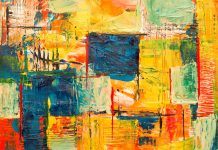The display of visual art is a seasoned activity dated to the classical era, when commissioned works of art were mostly displayed privately in religious institutions, royal palaces, and houses of the social elite.
Fast-forward to more recent times, works of art – paintings, photographs, metal work, sculptures and more – have become more accessible, and are displayed in different ways, through a number of mediums to reach the intended consumer or buyer, the most popular ways being through art galleries and museums. Contemporary art galleries are home to many art styles, serving as a sales intermediary between the artist and prospective buyers. Often, the aesthetic and architecture of these galleries contribute to the culture and tourism of their communities. Art shows at these galleries also bring people together to view the works of specific artists, or explore special themes. Art museums often serve a more public purpose, showing many themed artworks that speak to geo-politics, national history, and social constructs, along with the display of a variety of stunning artworks as regular programming. These museums usually inspire social awareness and reflection.
As the world becomes more connected and communities become more open to new ways of doing things, more avenues to display art have arisen, bringing the beauty of art to more eyes and communities. Below are a couple of interesting ways art display has grown in recent times in Africa.
Public Art Display
The use of art in public spaces has grown more prominent in many African countries. Besides regular historical statues and monuments, governments have increasingly embraced the placement of various forms of art in parks, on streets, at traffic stops and roundabouts, and these are often commissioned specially for the state to beautify the outdoors, promote culture, and create societal awareness. Cities like Nairobi, Johannesburg, Capetown, Kigali and Lagos have embraced public art installations, thus beautifying their cities, improving community spirit and increasing tourism. A great example of this is the Lagos at 50 Celebrations in 2017, during which art installations, sculptures, and graffiti paintings were commissioned around strategic local government areas in the state.


Individual artists in Nigeria have also promoted the display of art in public spaces. British-Nigerian painter/artist Polly Alakija transformed the pillars under Falomo Bridge, a popular bridge in Lagos Island, by painting pictures of women on 50 pillars, these pillars representing women as pillars of strength in the society. She has also enabled cross-cultural art by exhibiting her Lagos canoe paintings (the Five Cowries Flotilla) in public spaces in London (the Totally Thames Festival London). Graffiti artist Osa Seven used graffiti to transform a once bland wall surface into a graffiti mural tribute to Lagos, on one of the most popular roads in the state, Ozumba Mbadiwe Way. Also, the annual Lagos Photo Festival, which welcomes participants from around Africa, has curated photo exhibitions in even the most remote areas of Lagos state, bringing the beauty of the art form to many communities. In Kenya, Bank Slave’s graffiti mural of Lupita Nyong’o beautifies the wall of the GoDown Art Centre, Nairobi.


Online Galleries
With the widespread use of the internet, art displays have gone digital, with artists uploading images of their work to online galleries and catalogues. This makes it easier for prospective buyers to look through a variety of pieces at their leisure, without having to visit the physical location of these pieces. Artists also benefit from this, as the purchase takes place directly between the artist and the buyer, with the online gallery assisting with payment and delivery logistics.
Examples of online art galleries in Africa are art635.gallery, which was launched by Nigeria’s GTBank, artitis.com (South Africa), and artyramaonline.com.
Art Fairs and Festivals
These are events organized for listed artists to exhibit their work over the period of time specified by the event. They create an opportunity for the art community and buyers to socialize, learn about the different art forms, and buy. These events usually attract people from neighbouring cities and countries, due to the immersive experience they provide. An example is Art X, West Africa’s largest annual art fair, which has exhibited the works of hundreds of African artists, and usually provides an entertaining art experience for thousands of attendees. The Art Africa Fair in Cape Town has also showed the works of artists from Africa and the diaspora.
Another great example of an art fair is Art in the Park Lagos, an open-air gallery which provides artists the opportunity to sell their work directly to buyers every weekend at Muri Okunola Park, a popular park in Lagos, Nigeria. This has gone a long way to make art available for easy viewing and purchase by people who come by.

Art will reach more people
The African continent is home to rich, diverse art by talented artists, and many countries have put in the work to ensure that their art communities are immersive and constantly evolving. West Africa and the South of Africa have led the bloom of the art scene in the continent, and other regions are overcoming the common challenges of openness and investment, to put their art within the reach of more people, as it really should be.
AUTHOR: Tomi Owó is a soul singer-songwriter from Nigeria. Her latest single “NIGHT RAIN” is available on all music streaming platforms.






































